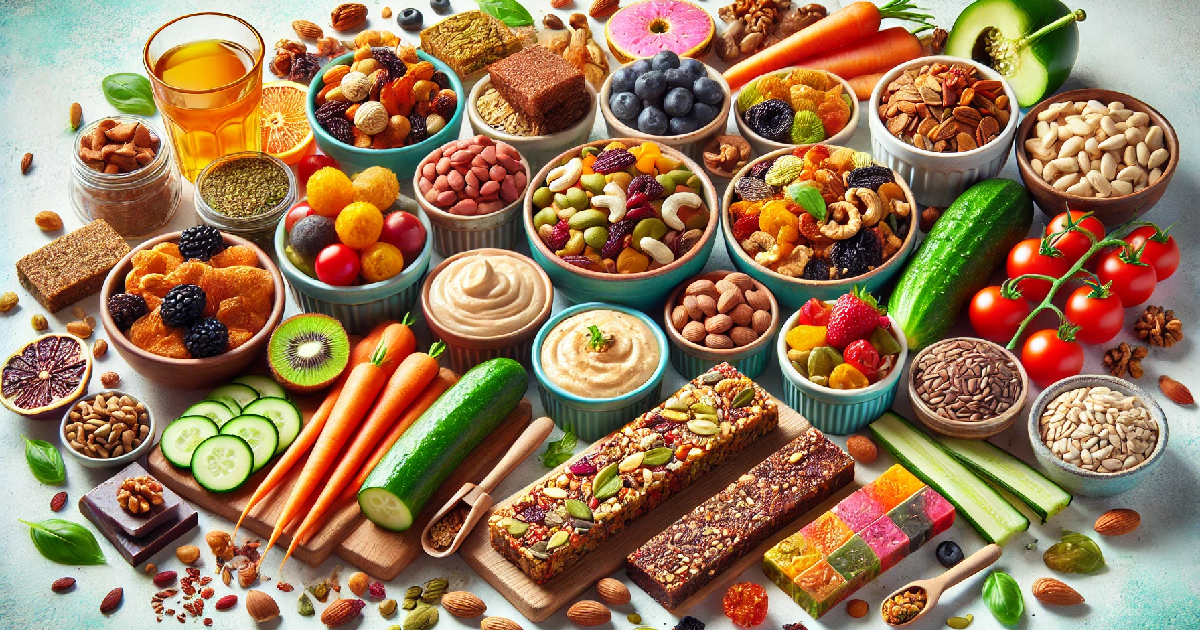Human existence and culture depend on food. Every country has unique cuisine, reflecting the region’s history, climate, and traditions. With so many diverse foods available worldwide, it is difficult to determine which is most eaten. However, some dishes have gained tremendous popularity and are enjoyed by people globally.
Now, we will examine the most eaten food in the world by delving into the cultural significance of these dishes and their ingredients. We’ll also highlight why these foods have become so popular among different communities worldwide. So sit back, relax, and let’s embark on a culinary adventure around the world to discover what people love to eat.
What Is The Most Universal Food?
The most universal food can be seen as rice. Rice is widely considered the most universal food due to its extensive cultivation and consumption across various cultures and continents. It serves as a staple food for more than half of the world’s population. Rice is versatile and adaptable to different cooking methods, making it a common ingredient in many dishes worldwide. Its prevalence can be attributed to its availability, affordability, and ability to provide sustenance and nourishment to a large number of people. From Asian cuisines like Chinese, Japanese, and Indian to Latin American dishes and beyond, rice has established its place as a universal food enjoyed by people across diverse cultures.
What Are The Top Ten Most Popular Foods?
Rice:
Rice is the most eaten food around the world. It is a basic crop for more than half of the world’s people and gives them the food they need to stay healthy. Rice has been grown for more than 5,000 years, which creates it one of the oldest foods that people have ever eaten.
The popularity of rice can attribute to its versatility and ability to complement various dishes. It can be boiled, steamed, fried, or baked, and it is useful in a variety of dishes. Also, it is a great source of carbs, which are important for our bodies to make energy.
Rice comes in various types, including white rice, brown rice, wild rice and jasmine rice, amongst others.
Bread:

Bread has been the most eaten food worldwide for a very long time. It is a versatile and comforting food made from simple ingredients like flour, water, yeast, and salt. It comes in various forms, from crusty baguettes to fluffy sandwich loaves, and can find in countless shapes and sizes. Bread is a delicious addition to meals and a symbol of nourishment, community, and tradition. Whether used as a vessel for sandwiches, a companion to soups and stews, or the foundation for bruschetta and toast, bread is a beloved food that brings people together and satisfies cravings with its delightful aroma, texture, and taste.
Pizza:
Pizza is an iconic and universally eaten food that originated in Italy but has become a global sensation. This savoury creation is characterized by its round, thin crust topped with a flavorful tomato sauce, melty cheese, and a variety of toppings. From classic favourites like Margherita with fresh basil and mozzarella to creative combinations of meats, vegetables, and even fruits, pizza offers a delightful explosion of flavours.
Pasta:
Pasta is one of the most eaten and adored foods on the planet. It is a fundamental food in many nations, including its country of origin, Italy. Pasta is composed of wheat flour and water, and it comes in a diversity of sizes and shapes.
It can be a primary food or a side dish, and many cooking methods exist.
Despite its prevalence, some individuals avoid eating pasta out of concern that it is unhealthy. However, this is only sometimes the case.
Chicken:
Chicken is the most famous and most-eaten meat in the world. It’s a versatile protein that can be grilled, fried, baked, or roasted to create a variety of flavours and textures. Chicken is also relatively inexpensive compared to other meats like beef or lamb.
Chicken has become so prevalent in diets worldwide due to its taste and nutritional value. It contains protein, little fat, and important vitamins and minerals like vitamin B6, iron, and zinc. Plus, it’s easy to prepare for meals since it cooks quickly and pairs well with a variety of vegetables and grains.
Due to its worldwide popularity, chicken has become a staple ingredient in many cuisines. This tasty bird is an important part of people’s diets everywhere, from fast-food restaurants to home-cooked meals.
Fish:
Fish is one of the most consumed foods in the world. It is a source of essential nutrients like omega-3 fatty acids, protein, vitamins, and minerals. Fish can prepare in various ways: grilled, fried, baked or boiled, and it is eaten as a main dish or side dish.
However, exploitation has become a global concern, particularly in developing nations where there are no regulations governing the fishing industry, leading to the depletion of marine resources. To ensure sustainable fishing practices globally, governments need to enact policies aimed at protecting aquatic life while promoting responsible fishing practices among fishermen.
Eggs:
Eggs are one of the world’s most ubiquitous foods. They are consumed in a variety of preparations, such as boiled, sautéed, scrambled, and poached. Eggs are a source of protein and nutrients such as vitamin D, choline, and iron.
Eggs play a significant function in numerous cuisines around the globe. Overall, eggs have become an integral part of the human diet throughout the centuries, being both practical to cook as well as nutritionally beneficial for people worldwide.
Potatoes:
Potatoes are one of the most eaten vegetables worldwide. I a staple in many countries and can prepare in numerous ways, including boiling, mashing, frying, roasting, and baking. Potatoes are rich in carbohydrates and provide essential nutrients such as potassium, vitamin C, and fibre.
In Ireland, they are a symbol of national pride and have been used as currency in the past.
Despite their popularity and versatility as a food source, it is important to note that potatoes should be eaten in moderation, as excessive intake can cause weight gain due to their high carbohydrate content. However, incorporating them into a balanced diet can provide numerous health benefits while still enjoying their delicious flavour.
Corn:
Corn is a fundamental food in numerous cultures across the globe. It is one of the most heavily cultivated crops and provides millions of people with their primary source of nutrition. Corn can be eaten fresh, dried, roasted, boiled, or ground into flour to make various dishes such as tortillas, tamales, porridge, and bread.
Corn is also essential to the global economy. The United States is the primary producer and exporter of maize, with China, Brazil, Mexico, Argentina, India, and South Africa also producing significant quantities.
Despite its widespread consumption and economic significance, corn has faced criticism for its impact on health due to high levels of sugars, which can lead to obesity when consumed excessively. As with any food, moderation is key, but it’s clear that this versatile crop will continue to play a vital role both economically and culturally across countries worldwide.
Beans:
In many parts of the globe, beans are a staple food and a main source of protein for those who cannot afford meat. There are several types, including kidney beans, black beans, pinto beans, and navy beans. Beans can cook in different ways – boiled, mashed or fried – to make various dishes like chilli, refried beans, and bean soup.
The popularity of beans can trace back to ancient civilizations like the Aztecs and Incas, who cultivated them alongside corn and squash. Today, they remain an essential ingredient in many cuisines worldwide, including Latin American, African, Asian and European cuisine. Over 400 million people worldwide eat beans daily, making it one of the most famous meals.
What Is Your Number 1 Favourite Food?
Determining the number one favourite food is subjective and can vary greatly depending on individual preferences and cultural backgrounds. However, it’s worth noting that pizza is often considered one of the most popular and most-eaten foods worldwide. With its wide range of flavours and toppings, pizza has gained immense popularity and has become a go-to choice for many people. However, it’s important to remember that favourite foods can differ greatly among individuals, and what may be number one for one person may not hold the same ranking for another.
Why Is Rice Widely Eaten?
Rice is the king of all foods and the most commonly eaten food. Because of :
- Availability: Rice is grown worldwide and readily supplied to a vast population.
- Versatility: Rice can be cooked and prepared in various ways, accommodating a wide range of culinary preferences and cultural traditions.
- Nutritional Value: Rice is a good source of carbohydrates, providing energy to fuel daily activities. It is also low in fat, cholesterol-free, and gluten-free.
- Digestibility: Rice is easily digestible, making it suitable for individuals with sensitive stomachs or dietary restrictions.
- Cultural Significance: Rice holds cultural significance in many societies, featuring prominently in traditional ceremonies, rituals, and celebrations.
- Affordability: Rice is often an affordable food option, offering a cost-effective solution to feed individuals and families on a budget.
- Long Shelf Life: Rice has a long shelf life when properly stored, making it a reliable and non-perishable food option.
- Global Consumption: Due to its versatility, nutritional value, and cultural significance, rice has gained widespread acceptance and consumption across diverse regions and populations.
What Food Is Very Healthy?

Many foods can consider healthy as they provide essential nutrients and contribute to overall well-being. Healthy foods include:
Fruits and Vegetables: Rich in minerals, fibre, and vitamins, vegetables and fruits are essential for a balanced diet. Berries, leafy greens, citrus fruits, broccoli, and carrots are examples.
Whole Grains: Whole grains like quinoa, brown rice, oats, and whole wheat bread are rich in fibre, B vitamins, and minerals.
Lean Proteins: Lean protein sources such as chicken breast, fish, tofu, beans, and lentils provide the necessary amino acids for muscle development and repair.
Nuts and Seeds: Almonds, walnuts, chia seeds, and flaxseeds are nutrient-dense and offer healthy fats, protein, and fibre.
Yoghurt: Yogurt is an excellent source of protein, calcium, and probiotics, which support gut health.
Fish: Fatty fish like salmon, sardines, and trout are rich in omega-3 fatty acids, promoting heart health and brain function.
Legumes: Lentils, chickpeas, and black beans are excellent sources of plant-based protein, fibre, and minerals.
Avocado: Avocados provide healthy monounsaturated fats, fibre, potassium, and vitamins.
Berries: Blueberries, strawberries, and raspberries pack with antioxidants and beneficial compounds that support immune health.
Dark Chocolate: Dark chocolate contain high cocoa antioxidants and may have cardiovascular benefits when consumed in moderation.
Leafy Greens: Spinach, kale, Swiss chard, and other green leafy vegetables are lower in calories and higher in vitamins, minerals, and antioxidants.
Sweet Potatoes: Sweet potatoes are a healthy root food that contains fibre, vitamins, and minerals like vitamin A and potassium.
Olive Oil: Extra virgin olive oil is a healthy fat that is full of heart-healthy monounsaturated fatty acids and vitamins.
Green Tea: Known for its high antioxidant content, it links to a number of health benefits, including enhanced brain function and a lower risk of chronic diseases.
Apples: Apples are among the most widely consumed and well-known fruits in the globe. They are available in various hues, including red, green, and yellow, and have distinct tastes and textures.
What Is This Junk Food?
Junk food is a kind of food that doesn’t have much nutritional value and usually has a lot of calories, sugar, salt, and fat. This kind of food is often processed and packaged to make it easier to eat. You can find it in most fast-food restaurants, vending machines, and grocery shops around the world. Some examples of junk food include potato chips, candy bars, soda pop, sugary cereals, fried chicken nuggets or patties, and pizzas loaded with cheese and toppings.
Despite being unhealthy for the body’s well-being and contributing to obesity-related diseases such as diabetes and heart disease, junk foods remain popular worldwide. The convenience factor, coupled with the addictive nature of these foods, makes them hard to resist even when we know they are harmful. As a result of this global phenomenon where people are choosing fast foods over home-cooked meals more frequently than ever before, there has been a surge in awareness campaigns aimed at encouraging healthier eating habits by promoting healthy alternatives that offer better nutrition while being just as delicious as any other junk food available on the market today.
Which Foods To Avoid?
While rice can be a staple in many diets, it’s important to note that not all types of rice are created equal. White rice, for example, has been stripped of its nutrients and can cause blood sugar spikes. It’s best to opt for brown or wild rice instead.
Processed foods avoid as much as possible. These foods often have a lot of extra sugars, sodium, and fats that are bad for you. Fast food like burgers and fries are high in calories and need more nutritional value, so they consume less frequently.
Lastly, sugary drinks like soda and juice avoid or consumed sparingly. They may help you gain weight and make you more likely to get diabetes and other health problems. Water is always the best choice when looking for a healthy drink option.
Will I Lose Fat If I Stop Eating?
It is a common misconception that not eating will lead to fat loss. In reality, the opposite may occur. When the body doesn’t get enough food, it goes into a state called “starvation mode.” In this state, the body saves energy and slows down its metabolism to keep fat stored for life. This means that even if someone didn’t eat for a few days, they wouldn’t have to lose weight.
Furthermore, prolonged periods without proper nutrition can lead to muscle loss and damage to vital organs such as the liver and kidneys.
As for the most eaten food in the world, rice consistently ranks at the top. While rice itself does not have significant nutritional value beyond carbohydrates, it can pair with other nutrient-dense foods, such as vegetables and proteins, for a well-rounded meal.
Which Food Is Best For Life?
Rice is a staple in many countries, particularly in Asia. Rice has served as a staple food for thousands of years. It gives our bodies the carbs they need to function. People say brown rice is healthier than regular white rice because it has more fibre and calories.
Bread is also a food that a lot of people eat. Bread gives us the carbs and other nutrients we need. However, not all breads are created equal. Whole-grain bread made with whole wheat or other grains is healthier as they contain more fibre and nutrients than white bread.
How To Stop Feeling Hungry?
The most eaten food is rice, with an estimated 3.5 billion people consuming it daily. However, regardless of what type of food you consume, it’s important to stop feeling hungry all the time. One option to do this is by staying hydrated. Drinking water may help you feel fuller for longer periods and reduce your appetite.
Another way to stop feeling hungry is by eating more protein-rich foods like chicken, fish, and tofu. Protein intake is longer to digest than carbohydrates or fats, meaning it stays in our stomachs for a longer period and keeps us feeling full throughout the day. Additionally, incorporating fibre-rich fruits and vegetables into your diet can also keep hunger at bay while providing essential nutrients for overall health.
Why Am I Hungry After I Eat?
Consuming a filling meal with plenty of carbohydrates, many people still feel hungry after eating. This can cause many factors, such as insufficient protein or healthy fats.
Another reason why people may feel hungry after eating is due to their body’s reaction to certain foods. Some people may have sensitivities or intolerances to certain ingredients in their meals, causing their body to crave more food even if they are already full.
Remember your body’s hunger signals and ensure you are fueling it properly with a balanced diet of protein, healthy fats, and complex carbohydrates. Additionally, experimenting with different types of foods and tracking how your body responds can help determine any potential sensitivities or intolerances that could be contributing to post-meal hunger.
Should I Eat When I’m Hungry?
Regarding the most eaten food in the world, rice takes the top spot. This staple food is a dietary mainstay for billions of people, particularly in Asia, where it cultivates for thousands of years.
But should you eat when you’re hungry? The answer may seem obvious – yes! However, there are times when we mistake thirst or boredom for hunger and end up overeating. Eating nutrient-dense foods like fruits, vegetables, and lean proteins can help keep you fuller and provide your body with essential nutrients. So yes, eat when you’re hungry but choose wisely.
Which Country Is Famous For Its Food?
Regarding food, every country has its own unique and delicious cuisine. However, there are some countries that have gained worldwide fame for their cuisine. Italy is known for its mouthwatering dishes like pizza, pasta, and gelato. Italian food is simple yet flavorful and uses fresh ingredients to create dishes that love by people all over the world.
Another country famous for its food is Mexico. Mexican cuisine is known for its bold flavours and vibrant colours. The use of spices such as chilli powder and cumin makes Mexican food stand out among other cuisines.
Every country has its unique cuisine worth exploring. Italy and Mexico are two countries renowned for their delicious cuisine, which relish by millions of people worldwide.
What Are The Most Expensive Foods?
Few can compare the most expensive foods in the world to white truffles. These rare fungi grow underground and find in some areas of Italy and Croatia. Their scarcity, combined with their unique flavour profile, makes them a highly sought-after ingredient for high-end restaurants around the world. A single pound of white truffles can cost upwards of $3,000.
Another incredibly expensive food is wagyu beef from Japan. This highly marbled meat is known for its tender texture and rich flavour, but it comes at a steep price tag. Some cuts of wagyu can cost over $200 per pound.
While these foods may be considered luxury items by many, they are certainly not the most-eaten foods in the world. In fact, rice is widely considered to be the most consumed food globally. It serves as a staple crop in many cultures and uses as a base for countless dishes around the world. Despite its ubiquity, rice remains relatively inexpensive compared to some of the more exotic ingredients mentioned above.
Conclusion
The most eaten food is rice. More than half of the world’s people eat it every day, especially in Asia and Africa. Rice cooks in many different ways, like steaming, boiling, frying, or baking. It provides essential nutrients like carbohydrates, proteins, and vitamins that are necessary for energy production and overall health.
Despite being the most popular grain consumed worldwide, there are concerns about its environmental impact due to water usage and greenhouse gas emissions associated with intensive farming practices. Experts suggest promoting sustainable rice production methods prioritizing water conservation measures and reducing carbon footprint. Overall, rice remains a vital part of many cultures globally and will continue to be an essential source of nutrition for generations to come.

























